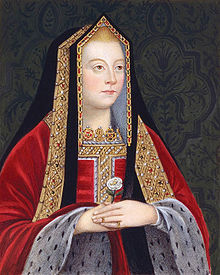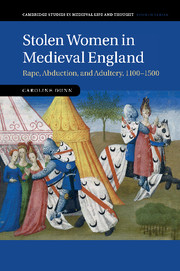Synopsis: Thomas Penn's brilliant new telling of the wars of the roses takes us inside a conflict that fractured the nation for more than three decades. During this time, the house of York came to dominate England. At its heart were three charismatic brothers - Edward, George and Richard - who became the figureheads of a spectacular ruling dynasty. Together, they looked invincible. But with Edward's ascendancy the brothers began to turn on one another, unleashing a catastrophic chain of rebellion, vendetta, fratricide, usurpation and regicide. The brutal end came at Bosworth Field in 1485, with the death of the youngest, then Richard III, at the hands of a new usurper, Henry Tudor. The story of a warring family unable to sustain its influence and power, The Brothers York brings to life a dynasty that could have been as magnificent as the Tudors. Its tragedy was that, in the space of one generation, it destroyed itself.
The Wars of the Roses were a series of English civil wars for control of the throne of England fought between supporters of two rival cadet branches of the royal House of Plantagenet: the House of Lancaster and the House of York. Eventually, the wars eliminated the male lines of both families. Although the conflict lasted through many sporadic episodes between 1455 and 1487, there was related fighting before and after this period between the parties.
Penn's narrative begins with the rise and Edward IV and his ascendancy over Henry VI in claiming the throne of England (1461), first sought by Edward's father Richard, Duke of York (1460). For those who are unfamiliar with this period, Penn's book provides a springboard from which to launch your own journey. All the major players and events are covered off in a detailed history that is neither dry nor sleep inducing.
So as I read, I was being tempted with interesting passages describing the wars as "... a destructive chain of rebellion, deposition, vendetta, fratricide, usurpation and regicide ..... they dynasty's end was brutal .." and of the character of the brother York who ".. burned fiercely and died young .." as being ".. shaped [by] the way the saw the world and their place in it ..". Penn further tempts us with ".. the tragedy of the brother York was that they destroyed themselves ..." and Penn was going to enlighten us as to how and why.
What is abundantly clear is that Edward himself was the architect of the demise of the House of York. His blantant favouritism, initially of his brother George and then of his collective in-laws (the Rivers and Woodville clans) at the expense of his own family and loyal supporters, created an atmosphere of bitter and petty rivalry and jealousies, punctuated by backstabbing, paranoia, treachery and ultimately, betrayal and rebellion.
Prior to his brother's marriage, George Plantagenet found himself in the enviable and complicated position of heir presumptive. As the brother of the newly crowned Edward IV, whose succession was not hereditary, George's own position needed some serious elevation. Edward began to groom George as his successor - he was endowed with lands and titles whilst still a teen, creating a strong sense of entitlement in a young man ill-strained and ill-suited for such a role. For when Edward announced his marriage to Elizabeth Woodwville, George is more or less side-lined in favour of Elizabeth's extensive family, upon whom honours and lands are loaded, and advantageous marriages are arranged. George's position as heir presumptive is now uncertain, and as he is finding himself more and more on the outer, falling ever more under the sway of the Earl of Warwick (his uncle) who sees George as the perfect foil against Edward and possibly a new tool for his kingmaking pursuits. Warwick and George collaborate and make a plan to take the crown from Edward but after their attempts fail, they are declared traitors and driven out of England.
Richard figures very little in this story as he really doesn't come into his own until late into the second part of Edward's reign. He is not the heir presumptive and spends much of his time away from Court. He is the doting and loyal younger brother of the King, not involved in the machinations of brother George and the Earl of Warwick. His character is very different from that of his brothers - he had never really known a time when war was not prevalent and was said to have been unbending in his beliefs. However, as he reaches his teens and in the wake of George's rebellion, Richard is given more responsibility in the northern part of England - afterall, Edward is far too busy satiating is carnal pursuits, preferring to leave the government to others.
I am in two minds with this book. On the one hand, it is a very well researched and engaging history of the Wars of the Roses, that was fascinating and dramatic. However, to me, it was more of a chronicle of the rise and fall of a prominent family, with a heavy focus of Edward, his court and courtiers, contemporary politics, peppered with quite a few side journeys into other areas which I found to be both distracting, unnecessary, and of no real interest to me.
I came into this with an already sound knowledge of the Wars of the Roses, so what I was hoping for was more of an analytical approach to the three brothers and their inter-personal relationships; I felt that there should have been more focus on this aspect to explain why the dynasty imploded ".. within a generation.." I guess I wanted a more psycho-analytical approach to explain the family dynamic - Edward (the sunne in splendour), George (the petulant middle child), Richard (the broody dark horse) - these explorations were few and far between. Edward's nepotism on a grand scale was hardly a secret and that this would have created bitterness and tension amongst his brothers and his supporters is not surprising but this is hardly unique as history is, quite frankly, full of similar stories.

I hugely enjoyed Penn's Winter King: The Dawn of Tudor England (bio on Henry Tudor) so was looking forward to this - but left feeling just a little disappointed in that it was not structured how I thought it would have been and really, for me personally, there was nothing that I had not already read in various other tomes.
As I mentioned, nothing should be taken away from this book as it is a quite good re-telling of the Wars of the Roses.
 Synopsis: She was the mother of Henry VIII and wife of Henry VII, but who was Elizabeth of York? Raised as the precious eldest child of Edward IV, Elizabeth had every reason to expect a bright future until Edward died, and her life fell apart.
Synopsis: She was the mother of Henry VIII and wife of Henry VII, but who was Elizabeth of York? Raised as the precious eldest child of Edward IV, Elizabeth had every reason to expect a bright future until Edward died, and her life fell apart. I will applaud the author for taking on the person of Elizabeth. Very little is really known about this woman who lived through so much yet remained in the background for a greater part of her life. She was the peace-weaver between the Lancastrians and Yorkists; she was the sister and mother of kings; but she had no political role in her husband's reign - except for that of wife and mother.
I will applaud the author for taking on the person of Elizabeth. Very little is really known about this woman who lived through so much yet remained in the background for a greater part of her life. She was the peace-weaver between the Lancastrians and Yorkists; she was the sister and mother of kings; but she had no political role in her husband's reign - except for that of wife and mother.

![The Traitor and the She Wolf by [Adkins, David]](https://images-na.ssl-images-amazon.com/images/I/419mpcTxduL.jpg)












![Deadly Prospects: A gripping historical thriller with a brilliant twist (Scottish Mysteries Book 1) by [Gray, Clio]](https://images-na.ssl-images-amazon.com/images/I/61vQm1PkyRL._SY346_.jpg)
![Burning Secrets: A gripping historical mystery (Scottish Mysteries Book 2) by [Gray, Clio]](https://images-na.ssl-images-amazon.com/images/I/517IelqFl5L.jpg)
![Hidden Pasts: A gripping historical thriller (Scottish Mysteries Book 3) by [Gray, Clio]](https://images-na.ssl-images-amazon.com/images/I/51OIK85-rNL.jpg)
![An English Varangian by [Stein, Gabriel ]](https://images-eu.ssl-images-amazon.com/images/I/51dLf5xx7eL.jpg)
